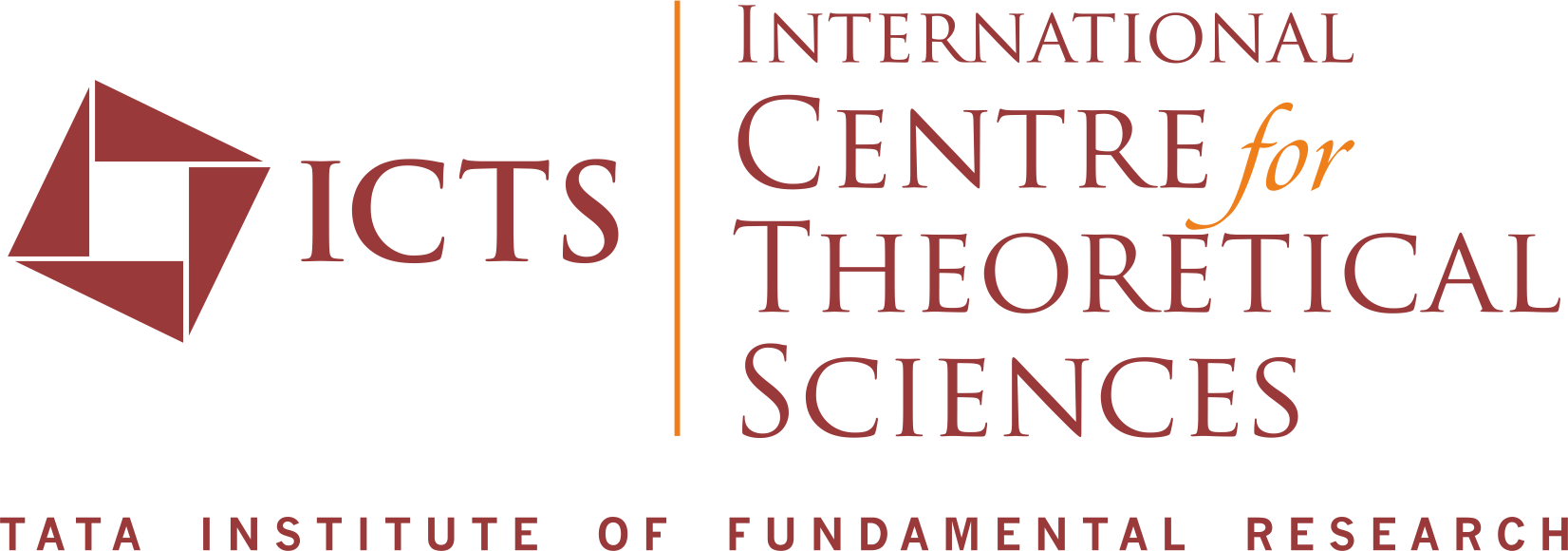ABSTRACTS
 Jayadev Athreya
Jayadev Athreya
Title: Groups of virtual links
Abstract: For every virtual link we define some group that is an invariant of this link. We prove that this group is the stronger invariant than the group which was defined by L. Kauffman.
------------------------
Kingshook Biswas
Title : On almost isometric extension of Moebius maps
Abstract : Motivated by the problem of marked length spectrum rigidity for closed negatively curved manifolds, we consider the problem of extending Moebius maps between the boundaries of CAT(-1) spaces to isometries between the spaces. We show that if X,Y are proper, geodesically complete CAT(-1) spaces, then any Moebius homeomorphism
f:∂X→∂Y extends to a (1,log2)-quasi-isometry F:X→Y. If X,Y are in addition metric trees, then F can be taken to be a surjective isometry.
---------------------------
Abstract: We recall the definition of Kulkarni limit set in a general setting. We compute Kulkarni limit set of cyclic subgroups of PSL(3,C) acting on P2C. We give a sketch of the proof of the following theorem:
Under some conditions on a discrete subgroup of PSL(3,C), it is proved that its Kulkarni limit set is a union of complex projective lines. We give an example of a discrete subgroup of PSL(3,C) whose Kulkarni limit set consists of three complex projective line in general position. We classify those subgroups of PSL(3,C) such that the maximum number of complex projective lines in general position contained in its limit set is equal four. Finally, we give a construction of a subgroup of PSL(3,C) not conjugate to any subgroup of PU(2,1) such that its limit set is not all of P2C, but it contains five complex projective lines in general position, hence it contains infinitely many complex projective lines in general position.
Pallavi Dani
same? After describing previously known results on fillings of dimension 3 and higher, I will talk about recent work with A. Abrams, N. Brady and R. Young which addresses this question in the case when the fillings are 2-dimensional.

---------------------------------
Kealey Dias
Title: Bifurcations of Complex Polynomial Vector Fields in C [Slides]
Abstract: The space of degree d single-variable monic and centered complex polynomial vector fields can be decomposed into loci consisting of vector fields with the same combinatorial structure. We study the topology and geometry of these loci, and describe some possible bifurcations. This work in progress aims to give a complete description of the possible bifurcations of these vector fields.
-----------------------------------
Gopal Datt
Title: Transcendental dynamics: escaping sets and composite functions. [Slides]
Abstract: We will discuss our work on escaping sets of transcendental entire functions and domains associated with composite transcendental entire functions. We will also discuss our results concerning sharing values. This is a joint work with Sanjay Pant.
---------------------------------------
Allan Edmonds
Title: Introduction to Haken n-Manifolds [Slides]
Abstract: Haken n-manifolds have recently been developed by B. Foozwell and H. Rubinstein of Melbourne University. They generalize the familiar Haken manifolds of dimension 3, constituting a class of manifolds that can be cut open along essential codimension-one submanifolds until they become a disjoint union of cells. The resulting sequence of manifolds, along with the cutting hypersurfaces, is called a hierarchy. Foozwell has shown that Haken n-manifolds are aspherical, with the interior of the universal covering homeomorphic to euclidean space. Their structure facilitates proofs by induction on dimension and on the length of a hierarchy.
We will apply this notion to the sign problem for the Euler characteristic of closed aspherical manifolds of even dimension, proving that the Euler characteristic of a closed Haken 4-manifold is non-negative.
------------------------------------
Fred Gardiner
Title: AN EXTENSION OF SLODKOWSKI'S HOLOMORPHIC EXTENSION THEOREM
Abstract: Here
------------------------------------
Subhojoy Gupta
Title: Projective structures, grafting and Teichmüller rays [Slides]
Abstract: We shall discuss a new result that relates grafting, which are certain deformations of complex projective structures on a surface, to the Teichmuller geodesic flow in the moduli space of Riemann surfaces. A consequence is that for any fixed Fuchsian holonomy, such geometric structures are dense in moduli space. The proofs involve construction of quasiconformal maps of low dilatation between surfaces.
-------------------------------------
William Harvey
Title: Discrete groups and the geometry of manifolds.
Abstract: This article considers the evolving interaction between hyperbolic geometry and low-dimensional topology over the past 50 years, focussing in particular on the contributions of Ravi Kulkarni to surfaces and 3-manifolds.
----------------------------------------
Quitzeh Morales Meléndez
Title: Noncommutative signature (and fixed points)
Abstract: It will be defined a signature of a cocompact manifold with proper action of a discrete group as an invariant of bordisms of algebraic Poincare complexes of projective modules over the group algebra. This signature has values in the K-theory of the reduced group C∗-algebra. It will be shown that this signature is compatible with the usual one and it will be proposed an inductive way to compute this invariant using the Connor-Floyd fix-point constuction.
--------------------------------------
Tarakanta Nayak
Abstract: Existence of Herman rings of all meromorphic functions having at least one omitted value is investigated. That no Herman ring of period one or two exists follows from a more general result on the arrangement of Herman rings. Functions with a single pole are do not have any Herman ring. It is also proved that Herman ring of any period does not exist for functions one of whose poles is an omitted value, or all of whose poles are multiple. This leads to the conjecture that Herman rings do not exist for meromorphic functions with at least one omitted value.
-------------------------------------------------
Olivier Sargent
---------------------------------------
Siddhartha Sarkar
Abstract : A finite p-group is said to be of Gorenstein-Kulkarni (GK) type if the set of all elements of non-maximal order is a maximal subgroup. 2-groups of GK type arise naturally in the study of group actions on compact Riemann surfaces. In this seminar I would try to outline how it arise and the infiniteness of GK-trees.
-----------------------------------------
Ser P. Tan
Title: Coxeter group actions on C^4 preserving quartic varieties: Dynamics and Identities. [Slides]
Abstract: We will discuss the dynamics of the action of the Coxeter group generated by 4 reflections on C^4 preserving the quartic varieties x^2+y^2+z^2+w^2= xyzw + k, where k is a constant. In particular we describe a (non-empty) domain of discontinuity for this action, and also prove some new identities for the orbits of an element in the domain of discontinuity under this group action. We will also describe generalizations of actions of Coxeter groups generated by n reflections on C^n, time permitting. This is joint work with Hengnan Hu and Ying Zhang.

